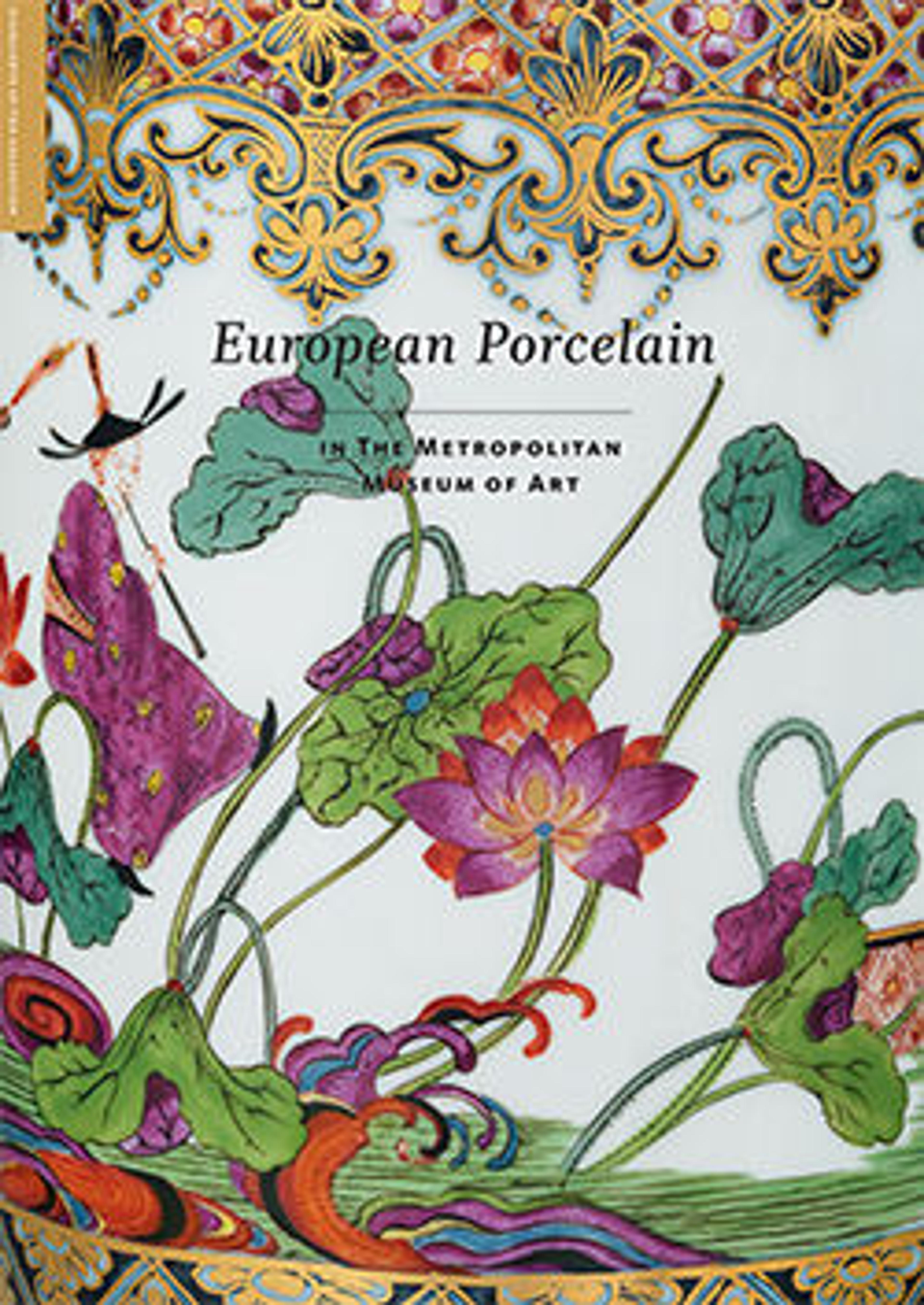Tankard
The decoration of the tall, bottlenecked vase (see 1974.356.363) has been attributed to Löwenfinck not only for stylistic reasons but also because two of the scenes that decorate the three reserves are repeated on a faience tankard made in Bayreuth that bears his initials, F.v.L. This tankard, which is also in the Museum (1974.356.246),[10] is dated from about 1736 to 1737, the period immediately following Löwenfinck’s departure from Meissen. On the tankard, one scene depicts three Chinese figures, one of whom appears to be a boy who holds a rabbit. In the second scene, one of three Chinese figures rides a fantastic beast and holds a pennant in his left hand. While these scenes are found on the Museum’s vase, they are in reverse orientation to those on the faience tankard. The understanding of why the compositions would be flipped is made more complex by the fact that the scene with the boy and the rabbit exists on another Meissen vase in the same orientation as that found on the tankard,[11] and the scene of the man riding a fantastic beast as seen on the tankard appears on yet another Meissen vase.[12] In other words, Löwenfinck repeated his compositions at Meissen but employed them in two different orientations, and then he reused the compositions at Bayreuth but in reverse of those found on the Museum’s vase. It is not clear why Löwenfinck inverted the compositions while he was at Meissen and again on the Bayreuth tankard. It is possible that he originated the compositions and simply decided to paint them in reverse on different objects, or that he worked from both an original sketch and from a print made of that sketch, which would have reversed the orientation.
Footnotes
(For key to shortened references see bibliography in Munger, European Porcelain in the Metropolitan Museum of Art. NY: The Metropolitan Museum of Art, 2018)
10 MMA 1974.356.246; Pietsch 2014, pp. 230–31,
no. 140.
11 Ibid., pp. 164–65, nos. 60, 61.
12 Ibid., pp. 160–61, nos. 57, 58.
Footnotes
(For key to shortened references see bibliography in Munger, European Porcelain in the Metropolitan Museum of Art. NY: The Metropolitan Museum of Art, 2018)
10 MMA 1974.356.246; Pietsch 2014, pp. 230–31,
no. 140.
11 Ibid., pp. 164–65, nos. 60, 61.
12 Ibid., pp. 160–61, nos. 57, 58.
Artwork Details
- Title: Tankard
- Decorator: Adam Friedrich von Löwenfinck (German, 1714–1754)
- Date: ca. 1736–37
- Culture: German, Bayreuth
- Medium: Tin-glazed earthenware (faience)
- Dimensions: Overall (confirmed): 7 1/8 × 6 × 4 3/16 in. (18.1 × 15.2 × 10.6 cm)
- Classification: Ceramics-Pottery
- Credit Line: The Lesley and Emma Sheafer Collection, Bequest of Emma A. Sheafer, 1973
- Object Number: 1974.356.246
- Curatorial Department: European Sculpture and Decorative Arts
More Artwork
Research Resources
The Met provides unparalleled resources for research and welcomes an international community of students and scholars. The Met's Open Access API is where creators and researchers can connect to the The Met collection. Open Access data and public domain images are available for unrestricted commercial and noncommercial use without permission or fee.
To request images under copyright and other restrictions, please use this Image Request form.
Feedback
We continue to research and examine historical and cultural context for objects in The Met collection. If you have comments or questions about this object record, please contact us using the form below. The Museum looks forward to receiving your comments.
